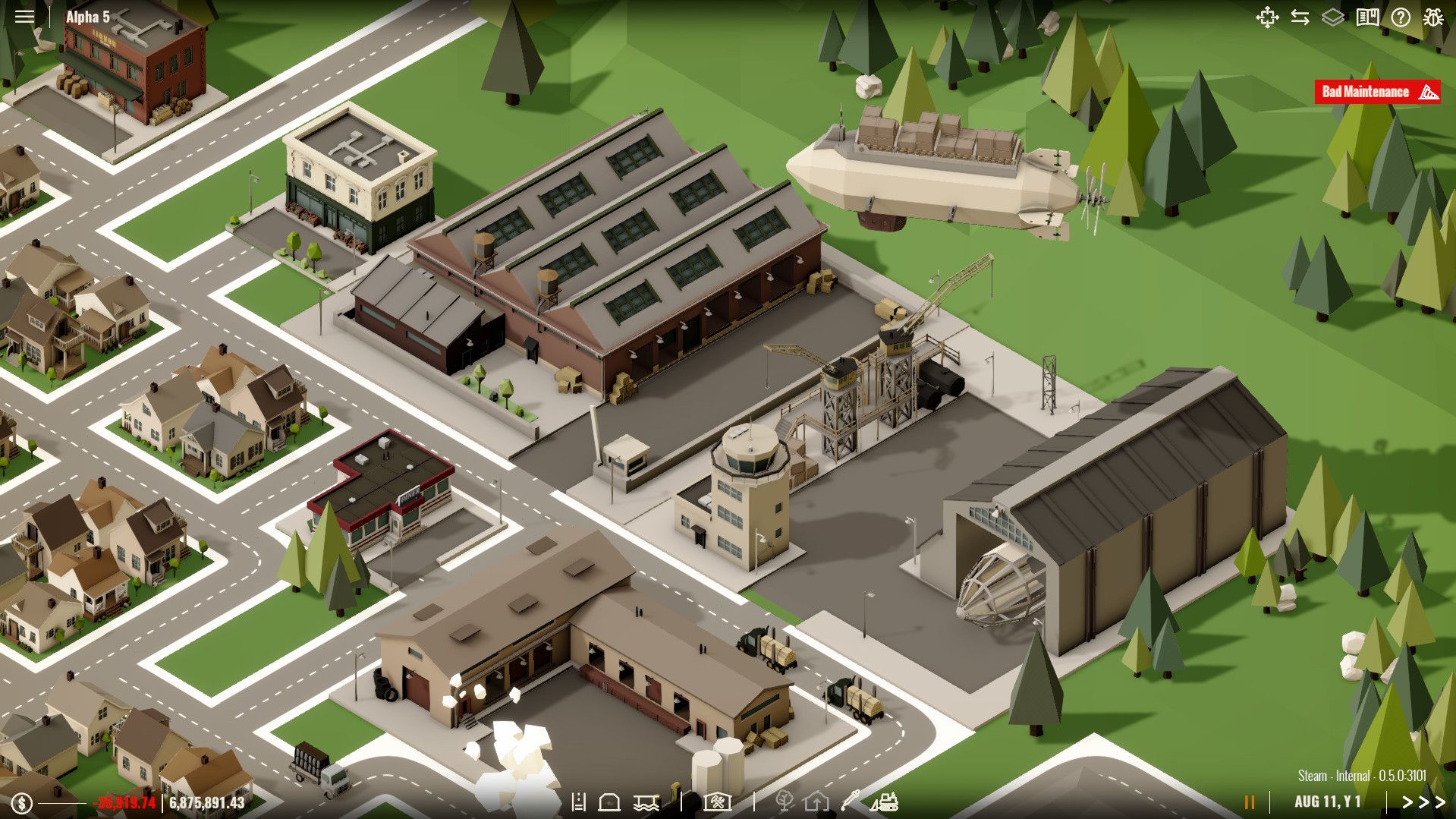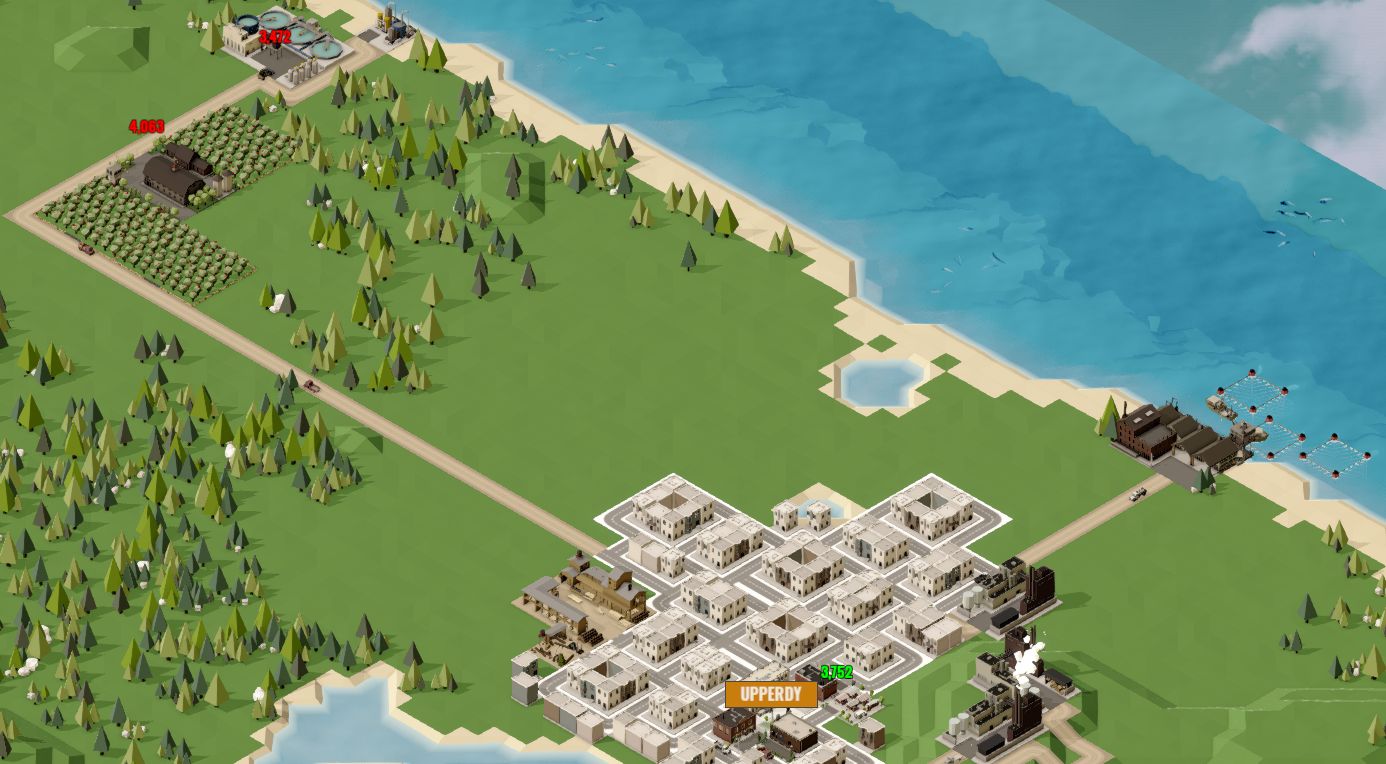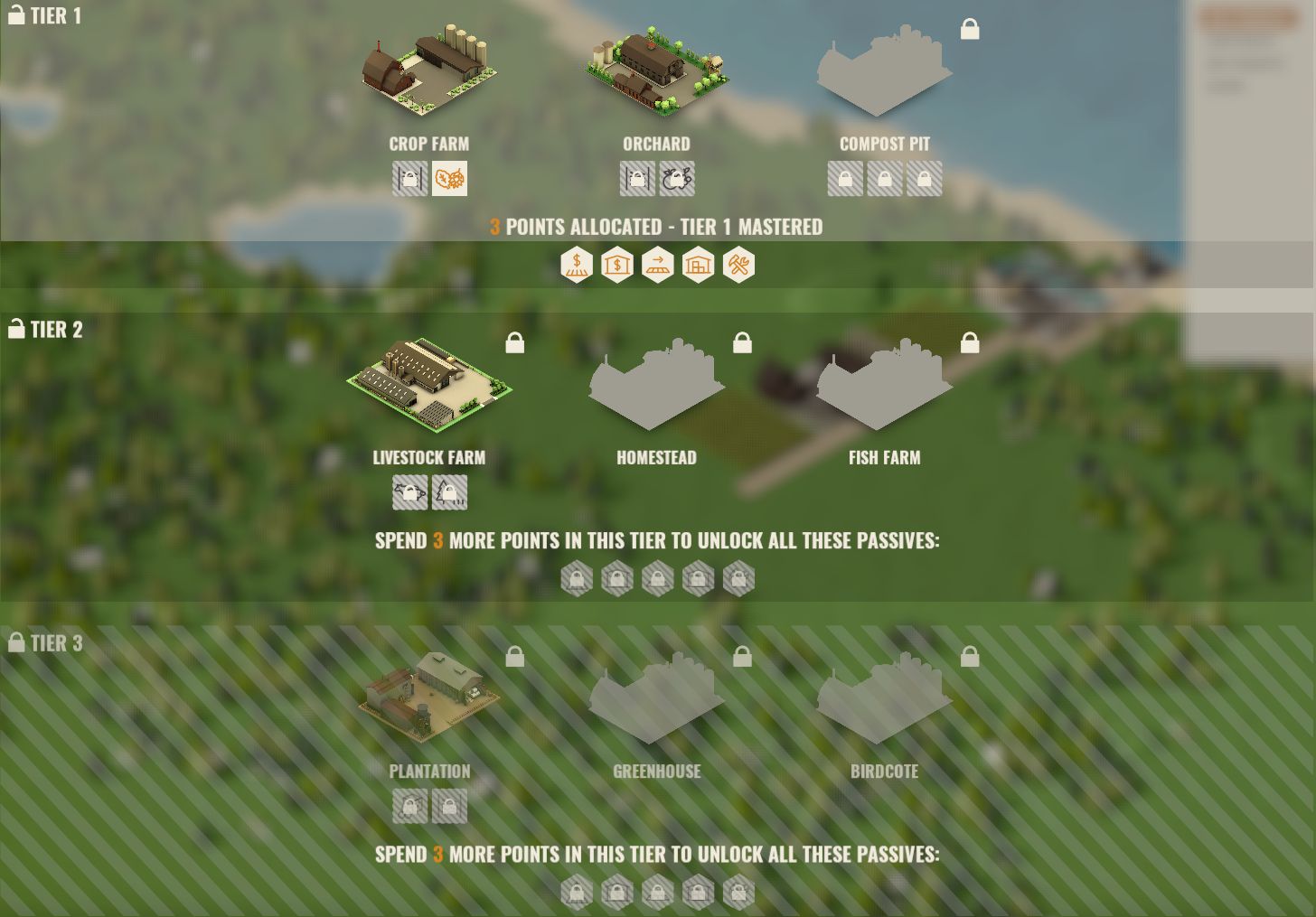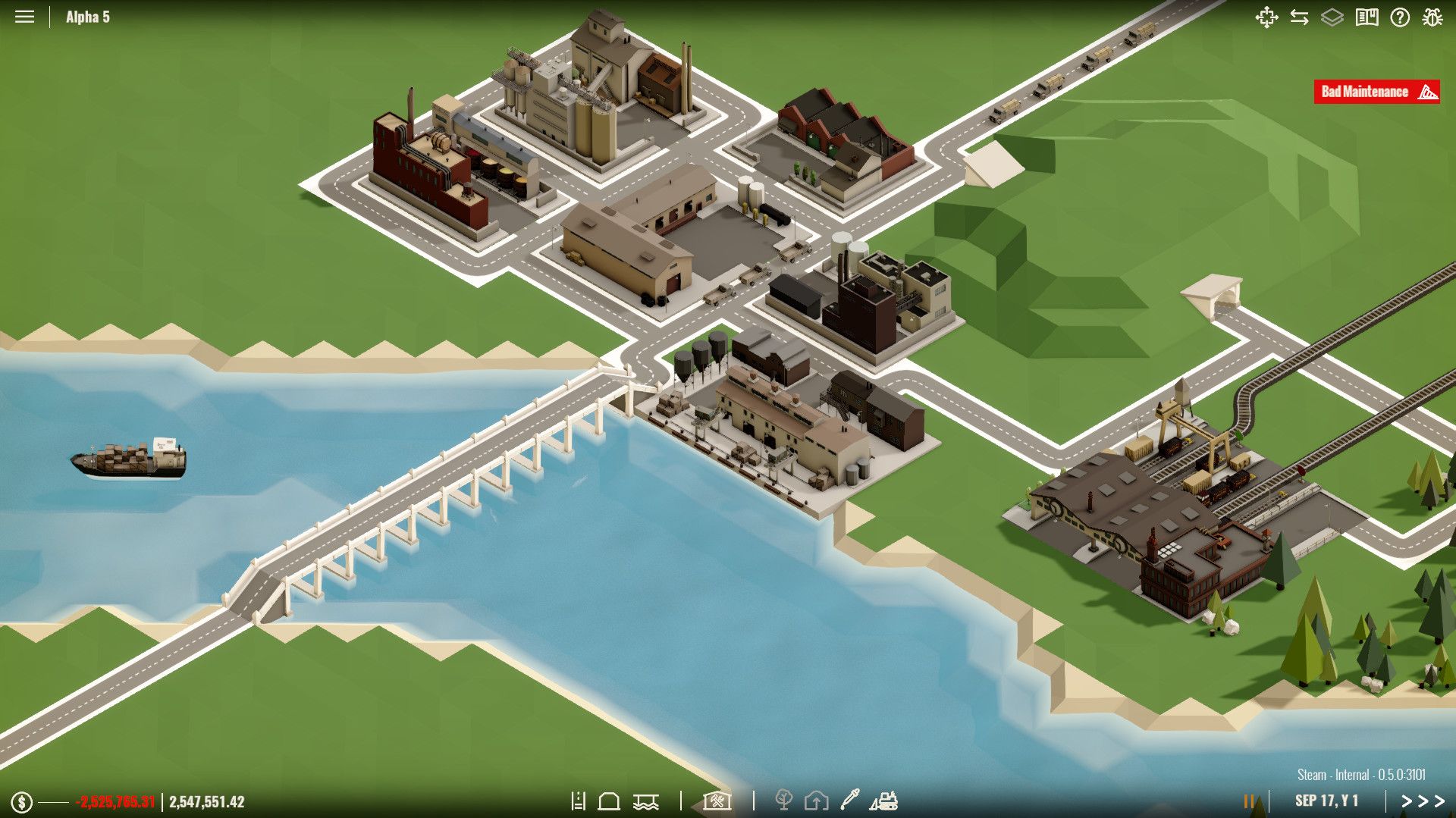Rise of Industry
Developer: Dapper Penguin Studios
Publisher: Kasedo Games
Platform: Linux, Mac, Windows (Previewed)
Release Date: 9th February 2018 (Early Access) – Q3/Q4 2018 (Full Release)
Price: $24.99 USD/€22.99/£19.99 – Available Here
Rise of Industry is a strategic tycoon game that puts you in the shoes of an early 20th century industrialist. Build and manage your growing empire in a living, breathing, and procedurally generated world that is constantly evolving and adapting to your playstyle. Build factories and farms, create efficient production and trade routes, keep an eye on the market, beat out your competitors, and, most importantly, make a thriving empire.
You start the game off with a modest amount of wealth to ensure you don’t go bankrupt too quickly, and then, by selecting a towns influence zone (The games version of the Cities: Skylines building areas) you can begin constructing your industry. There is always a counter in the top left corner showing earnings/losses and savings in green/red and white, respectively.

There are random events that can happen during play that can help or detriment your industry. Some of the helpful ones are: paying less taxes, products being in higher demand, faster truck movement. Some of the not so helpful ones are: paying more taxes, trucks moving slowly, low demand, building efficiency dropping. They add a nice challenge so that you’re always improving your industry and not just sticking to one thing only. Branching out can lessen the effects of these massively.
You start by choosing one of four specializations, Gathering, Farming, Industry, or Logistics. Choosing one will give you a few R&D points which you can spend on unlocking buildings and upgrades. Each specialisation has their own separate R&D point counter, which raises passively the more you use that certain specialisation. I’ll go into the specifics of each one later on as they all tie into a lot of other systems.
With gaining R&D points, it can take quite a while to gain them and unlock the buildings and upgrades you want early game. This is a good time to learn the map, the markets, and the other industries, but it does slow down the game by a fair bit. Post-release there will be the ability to upgrade the buildings speeds and efficiency, which should hopefully solve this problem.

One of the primary mechanics in Rise of Industry is managing trade routes between towns and factories. This can be achieved by using trucks, boats, trains, and airships. Each building houses their own trucks, which can be sent either directly to a store or sent to a dispatch building. The buildings you’ll be micromanaging the most is the Logistics buildings and the routes they take.
Logistics is the driving force of your entire industry. You have the choice to not buy the Truck Depot at the start and buy another upgrade instead; either the upgrade to better roads or so all buildings have extra despatch trucks. The most useful one is definitely the Truck Depot as a lot of buildings only allow one truck until you level up your logistics tree. The upgrades in this tree lead to you obtaining trains, and then finally, airships. At this point, there are a few logistical buildings missing, but they will be there in the final release, or will be available in updates after the game is out. Logistics ties into the whole game, as it’s all about planning what you’re going to sell and how you’re going to move it and where to. Set a route for a truck in each building then watch as you start, slowly, raking in money.
Each building also has a running cost and profit. The downside to logistics is that they are very high loss buildings if you build too many too early. In general, the maintenance costs of buildings seem too high, so be careful not to expand very quickly. This ties in to the issue of speed and efficiency upgrades, which will be available after release.
The first industry most people will get in to is farming; It’s the easiest one and is the one the tutorial shows you how to run. Farming is the easiest as well, just look for a city nearby that is buying fruit and vegetables before you place down your buildings! You don’t want to end up in a situation where the nearest fruit market is several towns over. You plant wheat or an apple orchard, or if you spent your R&D points wisely, you can sell the pricier items, like oranges. Farming is pretty simple, it follows the mechanics of most tycoon games that have farming sectors. Make sure there’s enough water and that you’re producing enough so that you don’t make a loss each month. There’s not much to go into here. You can create livestock farms that sell chicken, beef, and milk, then move to plantations. There is a deeper system related to this and gathering, but that will be covered in industry.

Speaking of gathering, it’s definitely one to get into mid-game or if you are doing a second run through. It’s one of the tougher industries to get yourself set up in as it is closely tied with industry. Gathering involves, well, gathering of the raw materials on the map. They can be sent to towns as raw materials, but you gain a lot more out of the game if you delve into the industry system with this.
Industry involves taking the raw materials, whether it be food or natural resources, and turning them into specific products. This is where the game really sets itself apart from other tycoon games. It has a robust system of using multiple factories to create one product. This can be a tough thing to wrap your head around at first, but there are helpful guides within the game.
Industry is the main focus and there is so much to get into that if you’ve made it this far I’d say go and get it for yourself and try it out. Turning oil into petroleum and paint then selling it for way higher than you’re producing it is very satisfying once you reach that point. There are so many steps to reach there though, so be prepared. The good thing is that this game autosaves and is one you can have running in the background generating money, or just open up for a few minutes, tweak a trade route, then switch it off.
The visual style is reminiscent of Rollercoaster Tycoon, Cartoony but still legible. They’re not the most over-the-top graphics, but for the genre and tone the game has, they fit perfectly. They also aren’t very machine heavy, which means almost any machine can run this game. It’s very satisfying to see trucks whizzing around from a zoomed out view, like watching an ant colony almost.

The music is also soothing and gets you into a building mood. I found myself in a trance when playing because of this. It’s the sort of music you’d hear in a nice hotel lobby or fancy store, mainly strings and piano with some wind instruments thrown in. The only other audio is that of chirping birds when you zoom into the world and the sounds of your building. It would be nice to be able to hear the sounds of my factories and trucks if I get close enough.
All in all, it’s a very enjoyable tycoon experience. I myself played it for about 3 hours straight when I first got my hands on it. If you enjoy these kinds of games, you’ll definitely enjoy this one. It’s complex, but that ramps up just as your skill and time investment does. There are many more features to be released, so make sure to keep your eye on this one!


